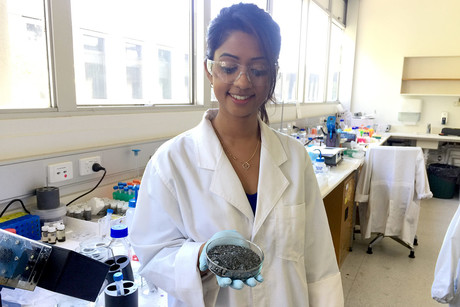Ready, set, GO — graphene oxide batteries are a cleaner alternative to lithium ion

Under a $3.45 million Cooperative Research Centre Project (CRC-P) grant, researchers at Swinburne University of Technology and Flinders University will partner with Australian industry to commercialise batteries based on graphene oxide (GO).
Collaborating with ASX-listed First Graphene and Victorian manufacturer Kremford, the researchers aim to make inroads into the production of a new super-capacity GO-powered battery — an alternative to the emerging lithium-ion battery (LIB) technology. The ‘High performance energy storage alternative to lithium ion batteries’ project seeks to advance the GO-based supercapacitor, which is said to have energy density, flexibility and environmental sustainability ahead of traditional batteries.
Graphene is the lightest, strongest, most electrically conductive material available and has been predicted to generate revolutionary new products in many industry sectors. Unfortunately, unreliable quality and poor manufacturing processes have so far prevented an industrial graphene market.
Now, researchers at Swinburne’s Centre for Micro-Photonics are working on a commercially viable, chemical-free, long-lasting safe GO-based supercapacitor which offers high performance and low-cost energy storage capabilities. Meanwhile, First Graphene has entered into a research agreement with Professor Colin Raston’s research group at Flinders University to improve GO processing and production.
“This project aims to develop the manufacturing specifications for the commercial production of a graphene oxide (GO) supercapacitor with the ‘look and feel’ of a LIB but with superior performance across weight, charge rate, life cycle and environmental footprint factors,” said Professor Raston.
“The production of GO from graphite ore, without generating lots of waste, is an important part of this collaborative project.”
First Graphene Managing Director Craig McGuckin said the $1.5 million in CRC-P funding his company received, to be matched by the partner organisations and in-kind, will help First Graphene propel the company’s innovative approach to finding real-world applications for graphene.
“The success in the fourth round of the CRC-P funding demonstrates the high regard in which the company’s research efforts are held,” McGuckin said.
Grants to help NSW businesses reduce emissions
The $4.5 million worth of grants encourage medium-to-large organisations to invest in metering...
Dashboard to support climate-aware business decisions
Fastly has launched a sustainability dashboard to help customers meet growing regulatory...
Grants to address Australia's green fuel needs
University of Sydney academics have been awarded grants to partner with industry to deliver...








